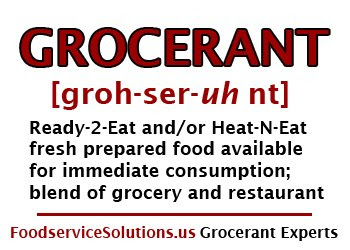As the food and beverage industry navigates the intersection of evolving consumer behaviors and digital innovation, one tool has surged in importance: digital coupons according to Steven Johnson Grocerant Guru® at Tacoma, WA based Foodservice Solutions®. These virtual savings mechanisms not only attract new customers but also drive loyalty, purchase frequency, and basket size. Yet, the path to success lies in seamless vertical integration. Here’s a look at how digital coupons work, why vertical integration is essential, and four compelling examples of success and failure in the industry.
How Digital Coupons Work in the Food
Industry
Digital coupons leverage digital platforms—websites, apps,
and emails—to provide discounts on specific products or services. Embedded with
unique codes, they are activated at checkout, whether in-store or online. Their
benefits extend beyond immediate cost savings:
1.
Data Collection: Digital coupons collect granular customer data, such as
purchase history, preferences, and location.
2.
Dynamic
Personalization: Retailers can tailor offers to
individual customer profiles, driving higher redemption rates.
3.
Enhanced Targeting: Geofencing and app-based notifications ensure timely
delivery of offers when customers are near a store or in the decision-making
moment.
Food Industry Fact:
According to Inmar Intelligence, over 80% of consumers prefer digital
over paper coupons, citing convenience and sustainability. Additionally,
digital coupons yield 40-50% higher redemption rates compared to their
paper counterparts.
Why Vertical Integration Matters for
Digital Coupons
To unlock full potential, digital coupons need to be
vertically integrated into a retailer’s ecosystem, encompassing supply chain,
marketing, POS (point-of-sale) systems, and loyalty programs. Vertical
integration ensures:
1.
Real-Time Inventory
Alignment: Avoid customer frustration by
syncing offers with current stock levels.
2.
Operational
Efficiency: Unified platforms reduce errors in
applying discounts and prevent double redemptions.
3.
Customer Retention: Coupons tied to loyalty programs create a seamless
experience that builds long-term brand equity.
Food Industry Fact:
Retailers that integrate coupons into loyalty apps see customer retention rates
soar by 15-20%, with average ticket size increasing by 30%.
Four Examples: Successes and Failures
in Digital Couponing
1. Restaurants: Panera Bread’s
Subscription Success
What’s Working:
Panera introduced its Unlimited Sip Club subscription, which offers digital
coupons for free coffee or tea daily. Integrated within their app, it drives
return visits and larger orders.
Key Data:
Panera reported a 70% increase in beverage category sales, with many Sip
Club members purchasing additional items during their visits.
What Needs Improvement:
While Panera excels at driving incremental visits, limited app adoption by
older demographics highlights a need for broader usability and alternative
access points.
2. Grocery Stores: Kroger’s
Data-Powered Coupons
What’s Working:
Kroger utilizes its loyalty card data to power digital coupons. Personalized
offers are delivered via their app and website, with significant success in
encouraging customers to try new products.
Key Data:
Kroger’s customers who engage with their personalized digital coupons spend 35%
more per visit and exhibit greater loyalty over time.
What’s Not Working:
Despite its strong program, customers often complain of “clipped” coupons
disappearing or not syncing properly at checkout, pointing to a need for better
app integration and user experience refinement.
3. Convenience Stores: 7-Eleven’s
Missed Integration
What’s Working:
7-Eleven offers digital coupons via its 7Rewards app for popular products like
snacks and beverages, driving impulse purchases.
Key Data:
Approximately 62% of app users redeem a digital offer within a week of
receiving it.
What’s Not Working:
Lack of real-time inventory management causes frequent out-of-stock situations,
frustrating loyal customers. Additionally, limited coupons for fresh food items
hamper their push into the Ready-2-Eat and Heat-N-Eat category.
4. QSR Chains: Burger King’s Mobile
Offers Misstep
What’s Working:
Burger King aggressively uses app-exclusive digital coupons to steal market
share from rivals like McDonald’s and Wendy’s. These include steep discounts on
combo meals.
Key Data:
In select campaigns, Burger King saw app downloads spike by 63% after
promoting app-only deals on social media.
What’s Not Working:
Overreliance on steep discounts has eroded long-term profitability. Digital
coupons intended to build app engagement end up training customers to wait for
deals, diminishing brand value over time.
Key Takeaways for Digital Coupon
Strategy
1.
Leverage
Personalization: Harness customer data to provide
tailored offers that resonate with individual purchasing habits.
2.
Integrate Loyalty
Programs: Ensure digital coupons contribute to
long-term retention rather than one-off purchases.
3.
Focus on Freshness: Retailers and restaurants need to tie discounts to
high-margin fresh food categories to bolster brand differentiation and
profitability.
4.
Mitigate Frustration: Properly align coupons with inventory and operational
capabilities to avoid disappointing loyal customers.
Food Industry Fact:
The NPD Group reports that retailers employing vertically integrated digital
coupon strategies saw an average annual revenue lift of 8%, compared to 3%
for those without vertical integration.
Digital coupons are no longer a “nice-to-have” but a
crucial element for driving foot traffic, enhancing basket size, and building
customer loyalty. By aligning operations, technology, and customer experience,
brands can transform digital couponing into a powerful tool for growth. As the
Grocerant Guru always says: "A digital deal well done brings customers
back for more—and that’s the recipe for brand success."
Foodservice Solutions® specializes in
outsourced business development. We can help you identify, quantify and qualify
additional food retail segment opportunities or a new menu product segment and
brand and menu integration strategy. Foodservice Solutions® of Tacoma WA is the global leader in the Grocerant niche
visit us on our social media sites by clicking one of the following links: Facebook, LinkedIn, or Twitter







No comments:
Post a Comment